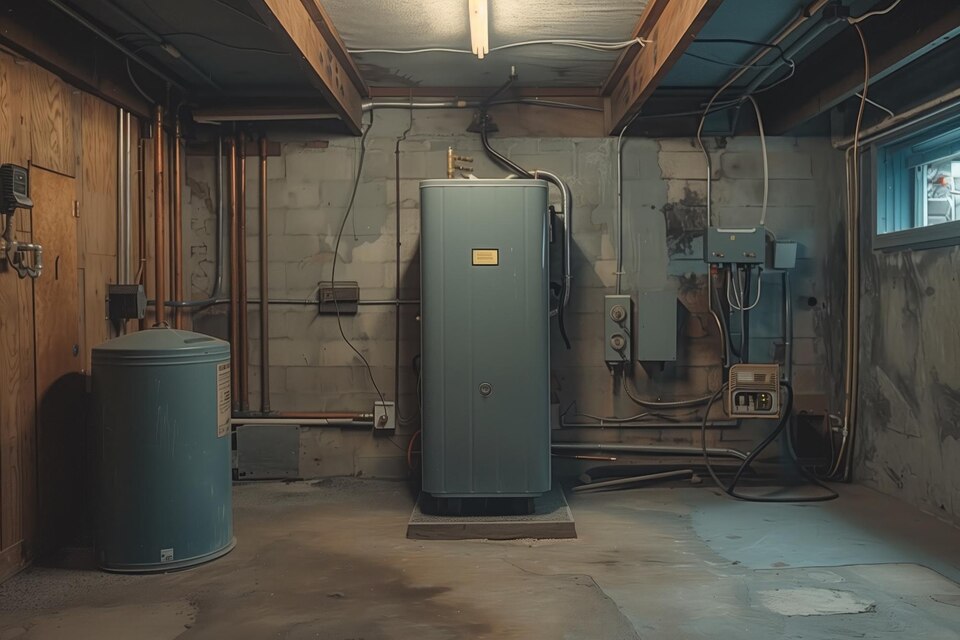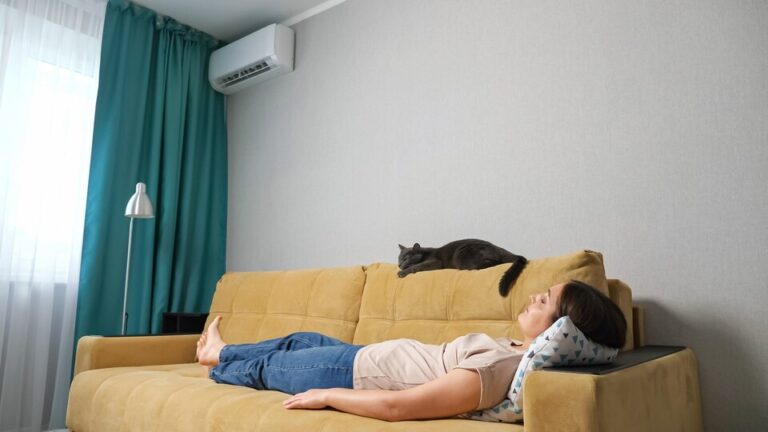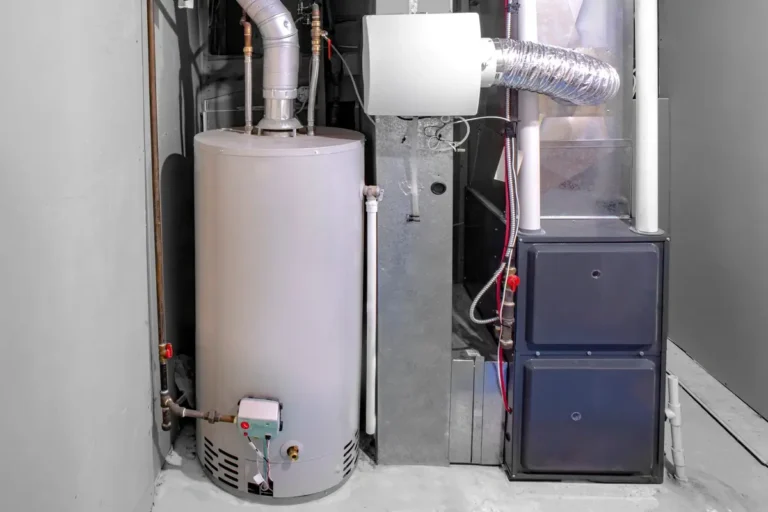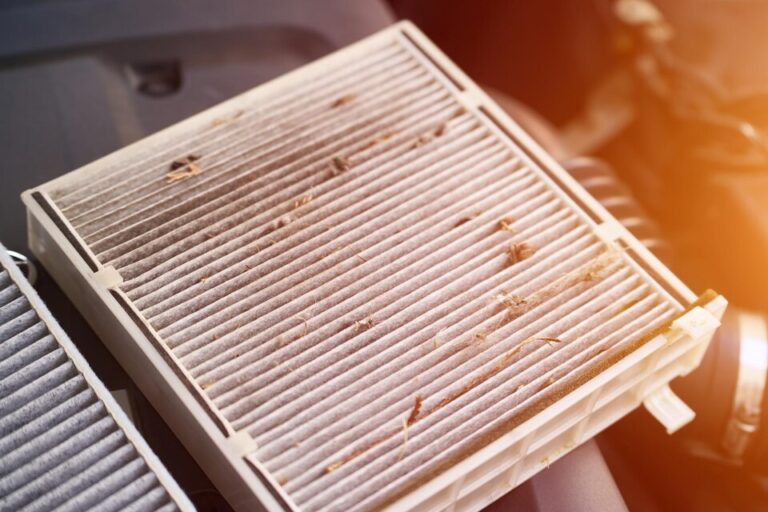When the winter months roll around, having a reliable furnace is a must. But what happens when your furnace starts acting up? Knowing how to troubleshoot furnace problems can help you quickly get your home warm and cozy again. This guide will walk you through step-by-step solutions to help you diagnose and fix common furnace issues.
Check the Thermostat
The first step in troubleshooting your furnace is to check the thermostat. This small device can cause big problems if it’s not working correctly. Sometimes, the issue lies with the settings or the batteries.
1. Verify Settings: Make sure the thermostat is set to “Heat” and not “Cool.” Also, ensure the temperature setting is higher than the current room temperature. This might seem obvious, but it’s an easy step to overlook.
2. Replace Batteries: If your thermostat is battery-operated, dead batteries can prevent it from functioning. Replace the batteries with new ones and see if that solves the problem. Many thermostats will show a low battery warning, so keep an eye out for that.
3. Check the Circuit Breaker: Sometimes, the issue isn’t with the thermostat itself but with the circuit breaker. Locate your home’s electrical panel and ensure the switch for the furnace is in the “On” position. If it’s tripped to “Off,” flip it back on.
4. Calibration: Over time, thermostats can become uncalibrated. If you suspect this, compare your thermostat reading with an indoor thermometer. If there’s a significant difference, you might need to recalibrate or replace the thermostat.
Inspect the Air Filter
A clogged air filter can lead to several furnace problems, from inefficient heating to complete system shutdowns. The air filter’s job is to keep dust and debris out of your furnace, but it can get dirty quickly.
1. Locate the Filter: First, find where the air filter is located. It’s usually near the blower compartment of your furnace. Depending on your model, you might have to remove a panel to access it.
2. Visual Inspection: Take a look at the filter. If it’s covered in dust and debris, it needs to be replaced or cleaned. A dirty filter restricts airflow, making your furnace work harder and less efficiently. This can lead to increased energy bills and strain on the system.
3. Replace or Clean: Replace disposable filters every one to three months. If you have a reusable filter, remove it and clean it according to the manufacturer’s instructions. Make sure it’s completely dry before putting it back in the furnace.
4. Set a Reminder: To avoid future problems, set a reminder to check the air filter regularly. This simple task can help keep your furnace running smoothly and reduce the need for furnace repair or heating repair services.
By checking the thermostat and inspecting the air filter, you can solve some of the most common furnace problems on your own. These steps are easy to follow and can save you both time and money.
Examine the Pilot Light or Ignition System
If your furnace isn’t producing heat, the issue could be with the pilot light or ignition system. These components are crucial for starting the furnace and keeping it running.
1. Check the Pilot Light: For older furnaces with a pilot light, ensure it is lit. If it’s out, follow your furnace’s instructions to relight it. Usually, this involves turning off the gas, waiting a few minutes for any gas to dissipate, then turning it back on and using a match or lighter to reignite the pilot.
2. Inspect the Flame: The pilot light flame should be blue and stable. A yellow or flickering flame can indicate a problem, such as a dirty pilot tube or a malfunctioning gas valve. In these cases, it’s best to call a professional for heating repair.
3. Electric Ignition Issues: Modern furnaces usually have electronic ignition systems instead of pilot lights. If your furnace has an intermittent ignition system or a hot surface ignition, hearing clicking noises but no ignition might indicate a problem. Resetting the furnace can sometimes solve the issue. Turn off the power to the furnace for a few minutes, then turn it back on.
4. Safety Concerns: If you smell gas or have any concerns about handling the pilot light or ignition system, leave your home and contact a professional immediately. Gas leaks are dangerous and should be addressed by experts.
Listen for Unusual Noises
Strange noises coming from your furnace can be a sign that something is wrong. Identifying these sounds can help you pinpoint the problem and take necessary action.
1. Banging or Popping: These sounds often occur when there’s a buildup of dirt on the furnace burners, causing delayed ignition. This means when the burner finally ignites, it creates a mini-explosion. Regular maintenance can prevent this issue. If you hear loud bangs or pops, turn off the furnace and call for heating repair.
2. Squealing or Screeching: These noises usually indicate a problem with the blower motor or fan belt. The fan belt might be loose or worn out, and the blower motor might need lubrication. Check these components and tighten or replace them as needed.
3. Rumbling: A continuous rumbling noise after the furnace shuts off can indicate a problem with the burner. It might be dirty or misaligned. A professional technician should inspect and clean the burner to avoid more serious issues.
4. Clicking: While some clicking is normal when the furnace ignites, constant clicking can be a sign of a failing thermostat or an issue with the ignition system. If the clicking persists or the furnace doesn’t start, it’s best to get a professional assessment.
Conclusion
Troubleshooting furnace problems can seem daunting, but breaking it down into simple steps makes it manageable. From checking the thermostat and inspecting the air filter to examining the pilot light and listening for unusual noises, these steps can help you identify and sometimes even fix common furnace issues.
If you need professional assistance or more advanced furnace repair in Fort Worth, contact NSG Heating and Air Specialists, LLC today. Our team is here to help keep your home warm and your furnace running smoothly. Schedule a consultation with us to ensure your heating system is in top shape!





